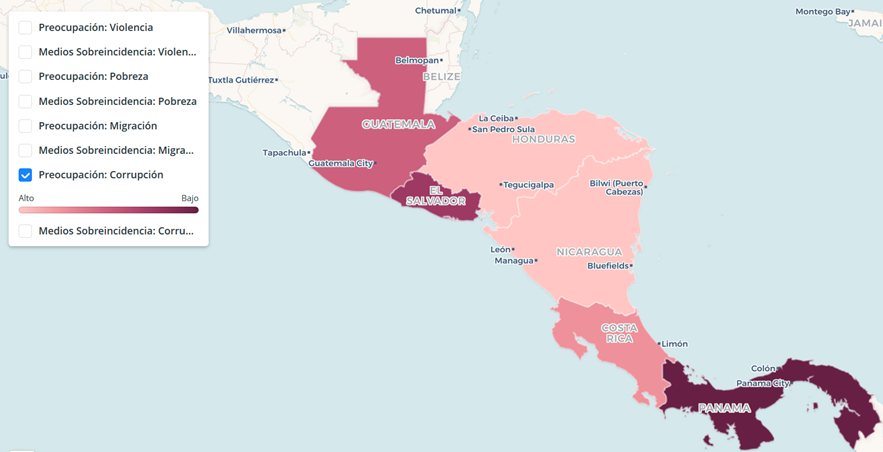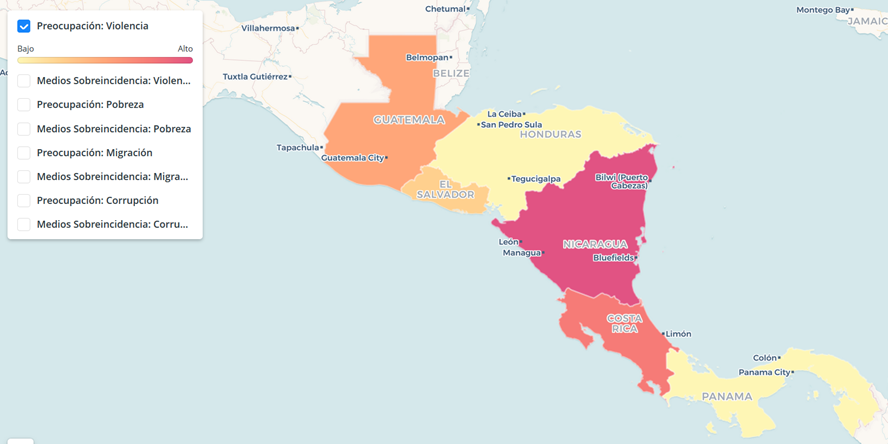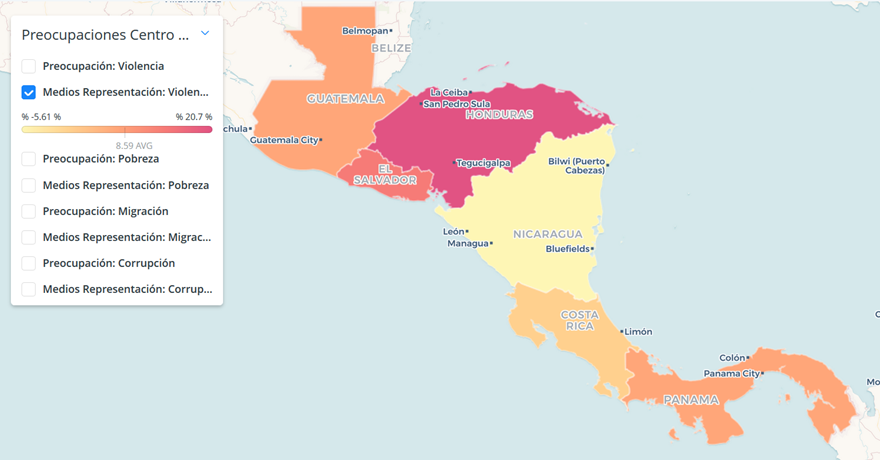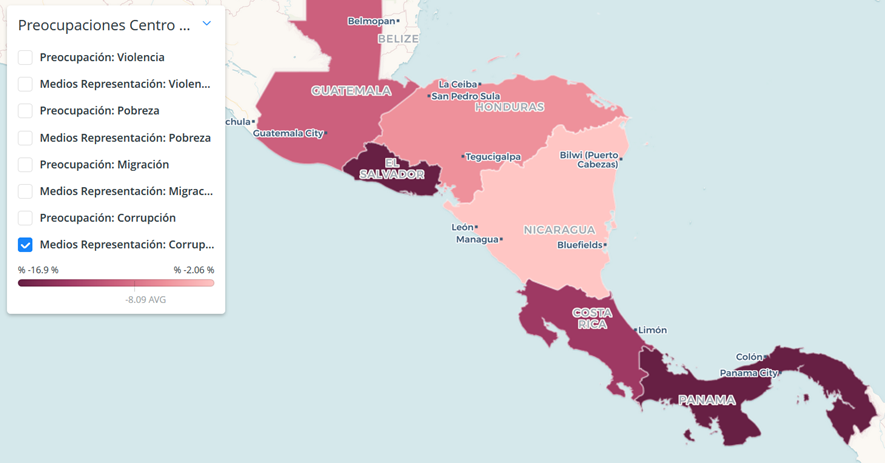
Violence and the Media in Central America
We have conducted a content analysis of digital media, aiming to understand what the main citizen concerns in Central America are. We have focused on both digital mass media (mainly newspapers) and social media.
The analysis reveals that there is a noticeable disparity between the prevailing topics that in social media, and those that get more attention from conventional mass media. This is because, while the discussion in social media engages with a variety of topics, violence prevails in mass media.
It is important to note the increasing relevance of social media as a tool for communication. In Central America, 83.10% of the population relied on the Internet mainly to access social media[1]. Hence, through an active listening of social media, it is possible to identify the main concerns of the citizens of Central America. There are three main prevailing topics in the digital discussion of the countries of Central America: migration, corruption and violence.
The map bellows (Fig. 1) shows that countries like Guatemala and Honduras are mainly concerned with the migratory issue. This is mainly due to the recent events regarding La Caravana on its way to the United States, as well as the plans to counter illegal migration adopted in the Intergovernmental Conference of the United Nations (UN) in Marrakech.

On the other hand, the issues that generate a bigger volume of conversation in Panama and El Salvador are those related to the topic of corruption and transparency. This tendency has also materialized in an increase of the index of perception of corruption[2]. It is important to highlight the measures that both governments have been putting forward to adhere to international standards of transparency promoted by organizations like the UN or the European Union.

Lastly, the main concern amongst the population of Costa Rica and Nicaragua is that of violence and drug trafficking. We shall note that this does not mean that the population of these countries suffers a higher level of insecurity. What the results of this analysis show is that the social debate is profoundly marked by this issue, partly due to the drug trafficking routes that pass through both states.

Contrary to what we could witness on social media, the analysis of mass communication media points to a topic that prevails in all Central American countries: violence. The map below (Fig. 4) shows the difference between the representation of violence in media and its presence in social media. Countries with a darker shade are those with a higher overrepresentation of violence. On the other hand, those with a lighter shade are the ones with more similarity between the volume of debate generated in social media and the volume of publications in digital mass media.

There are several reasons that can explain this overrepresentation. However, it is important to highlight the decrease in the consumption of print media in favour of the increase in popularity of digital media.
Graham and Fuchs [3]” analyse the link existing between digital media and the topics that it analyses. Although it is true that violence has always been one of the main focus of journalism, they consider media digitalization to be the driver of the increase of this phenomenon. In the Digital Era, media are more and more reliant on the income generated by advertising and the views on their pages. Consequently, they tend to publish content about those topics that attract more attention from the readers.
However, corruption and transparency are barely present in mass media when compared to the amount of debate involved in social media. With the exception of Nicaragua and Honduras (Fig. 5), the map shows how digital media in Central America tend to underrepresent the issue of corruption.

The overrepresentation of specific topics in the media is not exclusive to Central America. However, it is important to know what the main themes underlying public debate in social media so as to get a more nuanced image of public opinion in these countries. This kind of analyses allows identifying those topics that generate more interest amongst citizens, as well as events with a high impact on public opinion.
Conclusively, the analysis has enabled identifying the three main concerns in Central America, as well as their location and popularity in different countries. Migration, corruption and violence are the issues that they engage with the most on social media.
By comparing this with the volume of publications in digital media about the same topics, we can reach to main conclusions. On the one hand, the media focus their attention on issues related to violence, which is the prevailing topic in the media of every Central American country. On the other hand, the issues related to transparency and corruption tend to be left outside the main focus of digital media, despite leading to high amounts of debate on social media.
[1]Study on the Use of Social Media in Central America and the Caribbean (2018) https://ilifebelt.com/estudio-ilifebelt/
[2] Index of Perception of Corruption (2017) https://transparencia.org.es/indice-de-percepcion-de-la-corrupcion/
[3] Garnham, N. and Fuchs, C. (2014) “Revisiting the political economy of communication”. Open Access Journal for a Global Sustainable Information Society. 12 (1)









Add comment